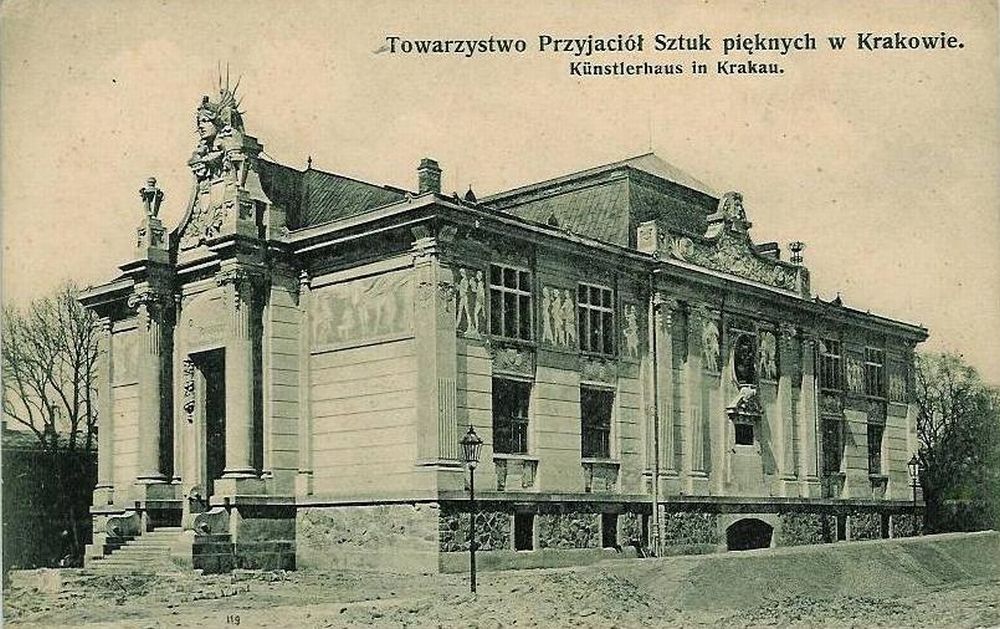 Modernizm
Modernizm
Nadwątloną na przełomie XVIII i XIX w. pozycję centrum kultury polskiej wzmacnia Kraków ok. 1900 r. Jest to zarazem moment narodzin nowego stylu, zwanego modernizmem, czy powszechniej – secesją, która w Polsce wyraziła się najpełniej właśnie w Krakowie, skąd promieniowała na inne rejony kraju. Tutaj też można podziwiać najwybitniejsze dzieła polskiej architektury modernistycznej, reprezentatywne dla poszczególnych jej odmian. W zaprojektowanym przez Franciszka Mączyńskiego gmachu Towarzystwa Przyjaciół Sztuk Pięknych (1901 r.) prócz głównej linii secesyjnych ornamentów i nowego już sposobu kształtowania bryły, widać jeszcze silne związki z XIX-wiecznym eklektyzmem.
Z kolei Teatr Stary, przebudowany w 1905 r. przez tegoż Mączyńskiego i Tadeusza Stryjeńskiego, już jako całość podporządkowany jest najpopularniejszym w architekturze secesyjnej konwencjom.
Wybudowana w 1912 r., według projektu Sławomira Odrzywolskiego, oszczędna w formie Szkoła Przemysłowa reprezentuje późne, ale jeszcze nie schyłkowe koncepcje modernistyczne.
Artyści tej epoki dążyli do uwidocznienia nowego stylu we wszystkich możliwych formach twórczości plastycznej, w architekturze oraz w rzemiośle artystycznym. W Krakowie wyrazem tych dążeń jest świetnie zachowane do dziś, tchnące trochę dekadencką, ale zawsze twórczą atmosferą przełomu wieków, wnętrze dawnej cukierni Lwowskiej Jana Michalika, zaprojektowane przez Karola Frycza (1911 r.). To właśnie tutaj jawi się nam przed oczyma Kraków Stanisława Wyspiańskiego, Józefa Mehoffera, Witolda Wojtkiewicza, Jana Stanisławskiego, Kazimierza Sichulskiego, Wacława Szymanowskiego, Konstantego Laszczki, Xawerego Dunikowskiego, a więc artystów, którzy kształtowali polski modernizm, nad którym zawisła też mroczna, tajemnicza filozofia Stanisława Przybyszewskiego – częstego gościa w podwawelskim grodzie.